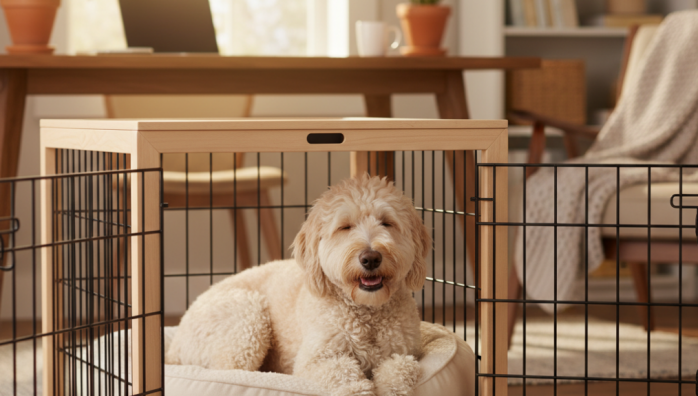Crate Training Eases Pet Separation Anxiety
by admin in Pet Care Basics 11 - Last Update November 18, 2025

When I first made the switch to working from home, I thought it was the ultimate dream for my dog, Cooper. I was there for endless belly rubs and midday fetch sessions. But a strange thing happened. The more time we spent together, the harder it became for him whenever I had to leave. A simple trip to the grocery store would trigger frantic barking and anxious pacing. I realized our constant togetherness had accidentally created a new, intense form of separation anxiety. It was heartbreaking, and honestly, I felt so guilty. That\'s when I decided to revisit crate training, not as a form of punishment, but as a tool to build his confidence and give him a space of his own.
Rethinking the crate: from cage to sanctuary
My first attempts at crate training years ago were a bit clumsy. I saw it as just a box to keep a puppy out of trouble. This time, my entire mindset shifted. I needed to reframe the crate in Cooper\'s mind—and my own. The goal wasn\'t to confine him; it was to provide him with a personal den, a safe haven where he could feel secure whether I was in the next room on a video call or out of the house completely. The crate became a predictable, calm environment in a world that suddenly felt scary without me in it.
The slow and steady process that actually worked for us
Patience was the most important ingredient. I threw out any idea of a deadline and just focused on making every interaction with the crate a positive one. We started from scratch, and here’s what I found truly made a difference:
- Location, Location, Location: I placed the crate in the living room, a central part of our home where we spend a lot of time. It wasn\'t shoved into a back corner. This made it a normal part of the furniture, not a place of isolation.
- Making it a Palace: I filled it with the plushest bedding I could find and one of my old, worn t-shirts so it smelled like me. It became the coziest spot in the house.
- The Treat Trail: I started by tossing high-value treats near the crate, then just inside the door, and eventually all the way to the back. I never forced him in. He went in on his own terms, which was a huge win.
- Meal Time Magic: For a full month, I fed him every single meal inside his crate with the door wide open. He began to associate this wonderful, amazing thing (food!) with his personal space.
- Closing the Door (for one second): Once he was comfortable eating in there, I started closing the door just for a second while he was eating, then opening it right back up. We gradually increased the time, second by second. It was tedious, but it built a foundation of trust.
How this connects to the remote work lifestyle
The real \'aha\' moment for me was realizing that crate training helped create structure and independence even while I was home. I started encouraging \'quiet time\' in his crate for an hour in the afternoon while I was on important calls. He\'d get a special puzzle toy that he only ever got in his crate. This taught him that being separated from me wasn\'t always a precursor to me leaving the house. It decoupled his anxiety from the act of being alone. Now, when I grab my keys, he often just watches me calmly from his cozy bed, knowing his safe space is right there.
It wasn\'t an overnight fix, and some days were better than others. But turning the crate into a sanctuary gave my dog his confidence back. If you\'re facing severe anxiety issues, this is just what worked for me, and I always recommend chatting with your vet or a certified positive reinforcement trainer to create a plan that\'s perfect for your pet\'s specific needs.










